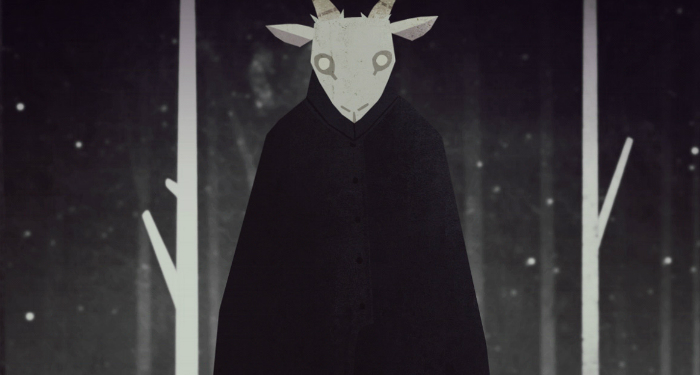Year Walk
Creator: Simogo
Target audience: People who enjoy mystery or horror games with interesting narratives
Platform: iPad or iPhone
Formal elements:
Players: Single player
Objectives: You step into the main character’s shoes as he goes on a Year Walk to look into the future. Along the way, you interact with Swedish mythological creatures and solve puzzles to unravel the mystery of what happens.
Rules and procedures: The player uses their fingers to navigate the environment. They can swipe left and right, and up and down to move left, right, forwards, and backwards. Some puzzles require users to listen for sounds, tap repeatedly and quickly, or rotate their phone upside down. The player finds puzzles and clues by exploring the landscape and interacting with objects, beings, and buildings. Puzzles are completed consecutively, so players cannot advance to the next part of the plot without having completed a given puzzle.
Resources: Players need to take notice of clues throughout the landscape in order to solve the puzzles. They also need to think cleverly about how to interact with the clues and puzzles in order to solve them. This requires them to experiment with how they physically interact with the interface, along with noticing details in the clues and looking out for patterns and seeing how seemingly random clues tie into the puzzles. Some flows require the user to touch the screen in specific ways for the action to be detected (e.g. simulating walking movements by physically ‘walking’ on the screen with two fingers, using one finger to drag an object while swiping across the landscape with another).
Boundaries: Players can only move left, right, forwards, and backwards on areas of the map that are unlocked. Completing more puzzles unlocks more areas.
Outcomes: While the player completes puzzles, new clues and elements of the mystery are revealed. At the end, after all the puzzles are solved, the player finds out what the main character saw in his future. You cannot really ‘lose’ the game, since there is no consequence for failing a puzzle. You have unlimited retries of puzzles. The only way a player fails is by giving up in this type of game.
Types of fun
Discovery: Players have the ability to explore the map whenever they want, so they are able to explore the landscape. The main point of the game is to explore the map in order to find the clues and solve the puzzles.
Challenge: Some of these puzzles are definitely challenging since it requires the user to think creatively. In particular, users often need to be creative with their interactions with the interface. Sometimes the player needs to use two or three fingers to accomplish a task, but most people would initially think this type of game only required one finger to swipe and tap. Also, it requires users to take notice of and remember different clues and patterns they come across, and it is kind of hard to navigate the map so it isn’t easy to go back and forth between areas.
Narrative: There is a pretty interesting mystery narrative driving the puzzles and clues. It was definitely confusing and did not make much sense to me until I finished the game and downloaded the companion app, which gives context and background information about the game’s setting. There is a lot of historical and cultural context with this game that they don’t give you unless you take the initiative to download the companion. I didn’t know what a Year Walk was and I didn’t know what all the mythical characters were so I didn’t find the game all that scary.The whole time, I also didn’t see how the puzzles and story snippets were connected. It seemed like a bunch of disconnected elements, and even after I finished the game I didn’t see how some parts of the story connected. For instance, the game combines two separate mysteries into one narrative. The only commonality is that they were set in the same area, several years apart. I suppose that adds to the overall tension and mystery of the setting, but I thought the story elements were actually connected in some way the entire time, only to find out that they were completely separate.



